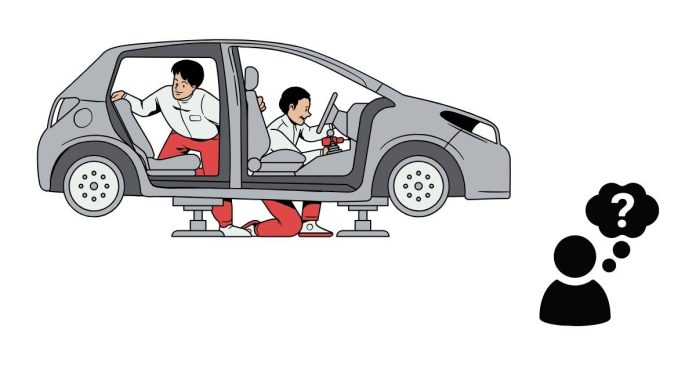Mechanics are the backbone of the automotive and machinery industry, ensuring vehicles and equipment run smoothly and safely. While the image of a mechanic often conjures up a person in overalls working in a bustling auto repair shop, their work environments are much more diverse. Let’s look at where mechanics work and the roles they fulfill in each setting.
1. Auto Repair Shops
Auto repair shops are perhaps the most common workplace for mechanics. These shops cater to a variety of vehicles, including cars, trucks, and SUVs. Mechanics here perform routine maintenance such as oil changes, brake repairs, and tire replacements, as well as diagnosing and fixing more complex issues like engine or transmission problems. Independent garages and franchise chains like Midas or Meineke are examples of these workplaces.
2. Dealership Service Centers
Automotive dealerships employ mechanics to service and repair vehicles from the brands they sell. These service centers often specialize in a specific make, allowing mechanics to become experts in the brand’s models and systems. Dealership mechanics may also perform warranty work and handle recalls.
3. Fleet Maintenance Facilities
Companies with large fleets of vehicles—such as delivery services, trucking companies, or public transportation systems—often have in-house maintenance teams. Mechanics in these facilities focus on preventive maintenance and quick repairs to keep the fleet operational. Their work ensures minimal downtime for vehicles that are critical to business operations.
4. Specialized Repair Shops
Some mechanics choose to work in shops that focus on specific types of repairs or vehicles. For example, there are transmission specialists, tire shops, or businesses dedicated to luxury or vintage car restoration. These environments allow mechanics to hone specialized skills and cater to niche markets.
5. Construction and Heavy Equipment Sites
Mechanics in the construction and agriculture industries maintain and repair heavy machinery like bulldozers, excavators, tractors, and combines. These professionals often work on-site, ensuring equipment operates efficiently to avoid project delays. Their expertise is crucial in industries that rely on heavy-duty machinery.
6. Aviation and Marine Maintenance
Aviation mechanics work on aircraft, ensuring they meet strict safety standards. Similarly, marine mechanics maintain and repair boats, ships, and other watercraft. Both roles require specialized training and certifications due to the complexity and safety-critical nature of the equipment they handle.
7. Mobile Mechanics
Some mechanics operate as mobile professionals, bringing their tools and expertise directly to customers. This growing trend allows them to perform on-site repairs, roadside assistance, or home service. Mobile mechanics provide convenience for customers and often focus on quick fixes and emergency repairs.
8. Industrial and Manufacturing Plants
Factories and manufacturing facilities often employ maintenance mechanics to keep their machinery and production lines running smoothly. These professionals work on a wide range of equipment, from conveyor belts to robotics, ensuring minimal disruptions in production.
9. Government and Military Facilities
Mechanics working for government agencies or the military maintain a variety of vehicles and equipment, from police cars and fire trucks to military tanks and aircraft. These roles often require additional security clearances and training.
10. Racing and Performance Shops
For those passionate about high-performance vehicles, working in racing teams or performance shops can be a dream job. Mechanics in these environments focus on optimizing engines, improving aerodynamics, and ensuring vehicles perform at their peak on the track.
Mechanics work in a wide array of environments, each offering unique challenges and opportunities. Whether in a traditional auto repair shop, a high-tech manufacturing plant, or on a construction site, mechanics play a vital role in keeping the world moving. Their skills and expertise ensure the reliability and safety of the vehicles and machines we rely on every day.


